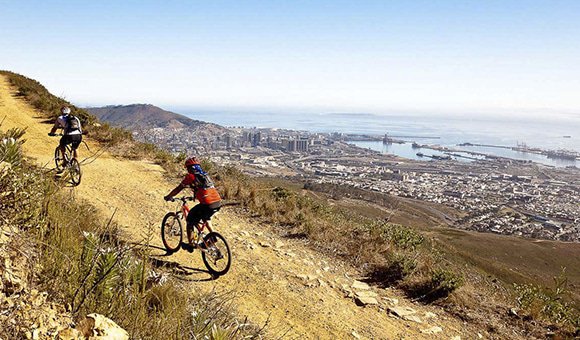7 Surefire Ways to Burn More Kilojoules on Your Bike
When fat loss is the goal, here’s how to squeeze the most out of every ride.
When fat loss is the goal, here’s how to squeeze the most out of every ride. – By Selene Yeager
You’ve likely heard the news that exercise alone is not the golden ticket to easy weight loss: You also need to eat well to drop the kilo’s. But you can definitely burn kilojoules while cycling, helping your fitness and fat loss along with a few easy on-bike strategies … no intervals required (though they help, too).
Use the spaces in-between. Cruising along at 23km/h can burn about 2092 kJ an hour—as long as you’re pedalling. Because newsflash: Coasting doesn’t burn kilojoules. If you’re looking to up your game, keep the pedals turning as much as possible, even when on slight descents, tailwind-assisted flats, and coming out of turns. On an undulating ride you could easily up your calorie burn by another 25 percent (or more) by simply staying out of idle.
Hit some gravel, trail, or even the bike path. Take a bike where the sidewalk ends to spice up your riding routine and turn up the burn. Riding on unpaved surfaces requires more energy (read: burns more kilojoules) than rolling over buttery-smooth tar because there’s more rolling resistance. The rougher the surface, the greater the workout. Full-on mountain biking burns upwards of 2510 kJ an hour and builds muscles in your arms, back, chest, and core.
Tune in. Music is really powerful. It can psyche you up. It can calm you down. Best of all in this case, it can make you pedal harder and burn more kilojoules without feeling like you’re doing more work. For that, you can thank what scientists call the “rhythm response,” which is our innate tendency to synchronise our movements to music. In one study published in the Journal of Sport Behaviour, researchers had cyclists perform a series of cycling time trials over the course of three weeks. The goal for each was to pedal at a set perceived exertion (13 on a 20-point scale, to be exact) for 12 minutes. In the end, when the cyclists listened to upbeat music, they hammered out an average of 7km/h during the test compared to just 6.3km/h when they pedalled away in silence.
Go places. Start commuting—even if only for short trips around town—and the extra kilojoule burn adds up fast. For example, start casually riding an extra 8km a day—to the store, to a friend’s place, maybe even to work if you live close—and you’ll burn more than 837 kJ (the amount in a candy bar, and enough to shed up to 9kgs over the course of a year) all while getting fresh air and avoiding parking hassles. You’re also less likely to return from short jaunts feeling like you need to reward yourself with a “recovery” drink or snack, negating those kilojoules burned.
One word: Hills. This one’s a no-brainer, but it bears mentioning that climbing hills burns more kilojoules than cruising on the flats. If you have a power metre, you can watch your watts rise as you easily more than double your power output—and your kilojoule burn. We generally recommend climbing in the saddle to conserve energy. But if you’re looking for a hard workout in a short amount of time, nothing beats standing hill drills. Simply alternate between sitting and standing, aiming to split the hill 50/50 in each position. Standing raises your heart rate and builds core and upper body strength.
Make a little muscle. Though it’s not a substitute for banging out some squats, you can use your bike to build a little muscle, which will help you ride faster and harder and, naturally, burn more kilojoules. Plus a few sets of the following are excellent kilojoule burners as well.
Monster Mash: While rolling on flat terrain, shift into your largest gear and get your speed up to about 24km/h. Remaining seated, start mashing on your pedals as hard as you can for 15 to 30 seconds. Rest 5 minutes. Repeat a total of three times.
READ MORE ON: lifestyle training programmes weight loss


